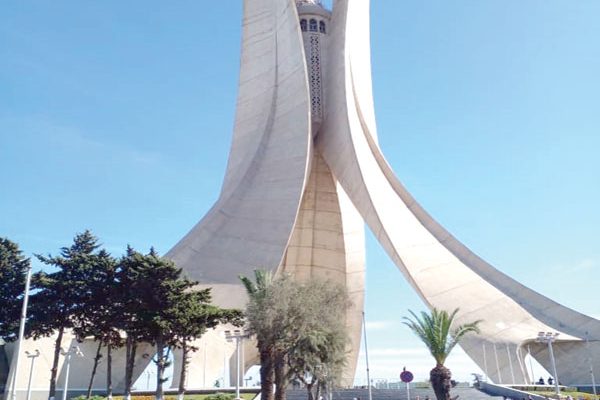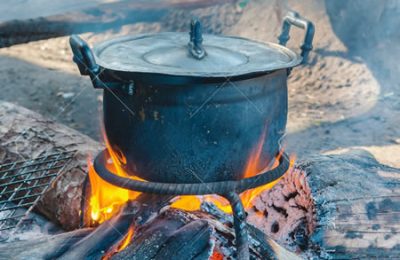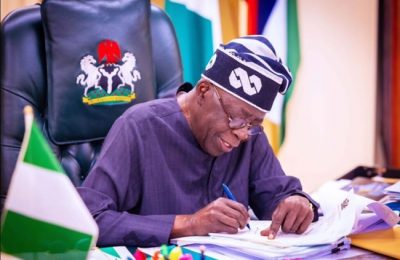On my second day in Algiers, my friend, Laeed Zaghlami, a Professor of Information and Communication at the University Of Algiers in Algeria took me on a sightseeing tour of the quaint and picturesque Algerian capital.
From my Sofitel Hotel abode on Rue Hassiba Ben Bouali, Professor Zaghlami nosed his car into the Boulevard Hasselbard passed the Hamma Botanical Garden, the National Art Museum on to the leafy neighbourhood of El Mouradia before we encountered the National Library Of Algeria.
For the next ten minutes or so, we drove uphill as the road twisted round the hilly city in a near dizzy rendezvous that finally brought us to the ‘Heights Of Algiers’ in the municipality of El Madania.

At that location, in the warmth of October, Algiers spread before us in a grand display of grandeur and beauty offering a panoramic view of the city including its famous harbour and port as well as the multilayered claustrophobic streets and ancient buildings.
‘’From here, you can see most of the important sites of Algiers’’ my host said. ‘’If you look well, you can even see your hotel and the adjoining Botanical Garden which we passed a while ago,’’ he added as he pointed out some buildings now turned into tiny speckle dots because of the distance.
The 80-hectare Botanical Garden which I am told was laid out by the French Army in 1832 and further developed by the respective directors of the garden, is home to around 3,000 plant species and trees. palm avenues, various bamboo trees, dragon trees, exotic shrubs and colorful flower beds invite visitors to take an extended stroll.
As we continued to enjoy the beautiful aerial view of the city, we were joined by other tourists who, like us, were busy enjoying the scene as they posed for photographs.

Our next point of call was the Sanctuary of the Martyrs, a concrete monument commemorating the Algerian War. History has it that Algerians waged a war of resistance from 1954-1962, before the country finally gained its independence from France.
This was a war where almost 1,5 million people lost their lives (Algerian historians put the death toll at 1.5 million Algerian victims while French historians say around 400,000 people from both sides were killed).
The monument which was opened in 1982, on the 20th anniversary of Algeria’s independence, is fashioned in the shape of three standing palm leaves, which shelter the “Eternal Flame” under it.
At the edge of each palm leaf is a statue of a soldier representing a stage of Algeria’s struggle for independence. The monument, which was said to have been erected on the site of an ancient military fort, was the brainchild of the then Algerian President, Houari Boumedienne.
Its implementation was, however, completed under the presidency of his successor Chadli Bendjedid. So revered was the monument that several soldiers were stationed to guard the memorial.
After admiring the beautiful and grand structure that commemorated the martyrs of the Algerian freedom struggle, we moved to the Museum of the Moujahid which was located below the structure.
There, we encountered a chilling perspective of what some colonial powers did to countries and people they colonised, in this case the French to people of what today is Algeria. From the various artefacts, photographs and memorabilia in the museum, I was able to perceive the level of the terror and violence that the Algerians went through in their quest for independence.
I had traveled to Algeria to participate in the 26th Edition of the Algiers International Book Fair. The event, which held at the Exhibitions Center in Algiers, was inaugurated by the Algerian Prime Minister Aymen Benabderrahmane in the presence of high-ranking government officials and diplomats.
Themed “Africa is Writing its Future,” the 2023 edition of the fair hosted about 1,200 publishing houses, with more than 900 international participants from 61 countries. In addition to the Book Exhibition, the fair also featured several sideline events such as seminars and discussions where I featured alongside other invited writers.
Prior to my departure to Algeria, I had paid a courtesy call on the Algerian Ambassador to Ghana, Ambassador Ali Redjel in his Accra office.
Apart from facilitating my attendance and that of the President of the Pan African Writers Association (PAWA), John Rusimbi at the Algiers Book Fair, Ambassador Redjel also approved one of the fastest Travel Visa applications I will ever receive in my travelling career. ‘’Make sure you visit as many places of tourist attractions before you leave the country,’’ the very affable diplomat had said at the end of the briefing.
Algeria, officially the People’s Democratic Republic of Algeria covers an area of 2,381,741 square kilometres (919,595 sq mi), making it the world’s tenth largest nation by area, and the largest nation in Africa by size, more than 200 times as large as the continent’s smallest country, The Gambia.
With a population of 44 million, Algeria is the tenth-most populous country in Africa, and the 32nd-most populous country in the world. The capital and largest city is Algiers, located in the far north on the Mediterranean coast.
The country is a regional power in North Africa, and a middle power in global affairs. It has the highest Human Development Index of all continental African countries and one of the largest economies on the continent, based largely on energy exports. Algeria has the world’s sixteenth-largest oil reserves and the ninth-largest reserves of natural gas. Sonatrach, the national oil company, is the largest company in Africa, supplying large amounts of natural gas to Europe. Algeria’s military is one of the largest in Africa, and has the largest defence budget on the continent. It is a member of the African Union, the Arab League, the OIC, OPEC, the United Nations, and the Arab Maghreb Union, of which it is a founding member.
In June 2022, the Energy Ministers of Algeria, Niger, and Nigeria revived a decades-old project to develop a gas pipeline that would traverse the Sahara Desert. Named the Trans-Saharan Gas Pipeline (TSGP), the envisioned project would connect Nigeria’s expansive Warri hydrocarbon fields to Algeria’s Hassi R’Mel feeder hub on the Mediterranean coast. When completed, it is expected that up to a trillion cubic feet of natural gas annually will pass through 2,565 miles of pipeline, with Algeria’s segment comprising 1,435 miles, more than half the total project length.
It was after an exhaustive but satisfying attendance at the Book Fair where I presented a seminar paper that my friend, Prof Zaghlami who had been introduced to me by my senior colleague and collaborator, the indefatigable Gen Ishola Williams (Rtd) took me on a detailed sightseeing of the attractive city of Algiers.
Set beside the deep blue Mediterranean sea, with its faded colonial French architecture and undulating hills, Algiers reminded me of Alexandria, Egypt, another thriving cosmopolitan harbour city with old world cafes, parks and promenades and some few remaining Greek and Roman ruins. Just like Alexandria, Algiers still has some relics of its past with the Boulevards named after Martyrs and Liberators while the French architecture and language confirmed its difficult but glorious past.
As my host drove down the city’s main street, Boulevard of Martyrs he pointed out the high rise headquarters of the Algerian Radio and Television station which was nationalised by Algeria on 28 October 1962 after many years of being under French control. Also visible under the glorious rays of the late afternoon sun was the massive Great mosque of Algiers, the ‘Djamaa el Djazair’ said to be the third largest mosque in the world after the two Islamic pilgrimage sites in Mecca and Medina.
Due to the congestion in the city centre, finding a parking space was difficult. This forced my friend to drive down to Algiers Harbour. As Laeed parked the car in the port’s generous parking lot which overlooked the Algeria National Theatre, I saw, sitting majestically at the harbour, a massive 5-deck ship. ‘’It is getting ready for the French city of Marseilles, a 22 -hour journey away’’ my host said.
As I took another look at the beautiful ship which is part of the Ferry service being operated by Algerie Ferries and Corsica Linea, it became obvious that despite the chequered history with her French colonial masters, Algeria still has a very robust relationship with France. According to current figures, Algerians form the largest number of African immigrants to France. While the official figure of Algerian immigrants is put at 1 million, it is believed that up to 6 million Africans of Algerian origin presently reside in France. In addition, I was made to understand that in order to service their robust business and human relationships, more than 40 flights still operate daily between the two countries.
On the flip side, in a bid to reduce the overbearing influence of France in its affairs, Algeria, like many other francophone African countries, has now introduced the study of the English language in her schools’ curricula. ‘’English which is generally acclaimed as the largest language of international commerce is now being studied at all levels of our schools beginning from the kindergarten level because Algeria wants to be in the forefront of International development’’ my host explained.
From the Algiers Harbour, we crossed into Boulevard Zighoud Youcef, a seafront boulevard lined with beautiful high rise buildings. The street was named after Youcef Zighoud who was an Algerian FLN party fighter during the Algerian War. Some of the buildings on the street included; the Bank of Algiers, the Senate Building as well as National Theatre of Algeria.
I called my host’s attention to some activities going on at a corner of the bank building. ‘’Those are currency exchange dealers. We call this place ‘the Wall Street of Algeria’’ he said as he burst into laughter.
A short walk led us into another street, Rue Didouche Mourad which was equally named after another hero of the Algerian War, Mourad Didouche. With its endless number of shops and cafes, the street is reputed to be one of the busiest streets in the whole of Algiers. The French influence was still very evident when walking this main thoroughfare, with a mixture of French and Arabic script visible on most storefronts.
Far right to where we stood, my host pointed out Algiers’ Old City…the ‘Casbah’ also called Medina which was built in the 16th century. Its narrow streets, renovated palaces and museums bear witness to the reason it was declared a World Heritage Site by UNESCO in 1992. The Casbah is not only an urban heritage site, but also considered a symbol of Algerian resistance to the French.
On Rue Ali Boumendjel, another street named after a hero of the Algerian revolution, we encountered a group of people clustered around a Notice Board festooned with photographs and printed notes. ‘’They are scrutinising photographs of people who applied for accommodation in a housing scheme to make sure that they are genuine applicants and not impostors’’ my host said.
As we walked down the city centre, I was introduced to more of the City’s major streets and buildings that were named after former revolutionaries and heroes of the Algerian War of Independence. It was obvious that Algeria is a country that celebrates her past activists for the roles they played in the liberation struggle with France. According to Laeed, ‘’all the boulevards and City centres in Algiers are named after our revolutionaries and some former Leaders’’.
Some of these streets which I could not visit were named after; Maurice Audin who was also a French mathematician as well as Che Guevera, the famous Argentinian revolutionary and great friend of Algeria.
The sun was still up when we gradually burrowed our way into the city centre as the hitherto emerald green palm fronds lined streets now changed into Rue de Larbi Ben M’hidi, a long pedestrian avenue, bustling with tourists. While some of the tourists were sightseeing, others were looking for bargains at the shops laden with goods sold at very affordable prices. With 22 Algerian Dinars exchanging for one US dollar, cost of living in the Algerian capital was moderate. ‘’With just one US dollar, you can buy a sack of potatoes’’, I was reliably informed. However, despite being an oil producing country with its own refineries, a liter of petrol was 45.62 dinars (2.07 US dollars).
Weaving their way through the flow of shoppers and gawkers were Algerians of various ages and gender. While many of the men were dressed in western clothes of shirt, jeans and jackets, almost all the women were in hijab. Flying proudly from many buildings and some cars in the background was the white green Algerian flag with a red crescent and star in the middle. School children returning from school could be seen in their pink and blue uniform as they clambered down from their school buses. Primary education which is free and compulsory is said to have resulted in an enrollment of about 14 million primary school students.
Rue de Larbi Ben M’hidi, finally emptied into the Emir Abdelkader square which was situated near the Algiers Center and the City Hall. Sitting proudly on horseback in the glow of the day’s twilight was the Emir Abdelkader statue. Regarded as the first leader of modern Algeria, the Emir was an Algerian religious and military leader who led a struggle against the French colonial invasion of Algiers in the early 19th century.
Twilight was now setting with a soothing wind blowing in from the deep blue Mediterranean sea.
Suddenly, the wind picked up as it howled along the narrow streets around the square. ‘’I hope the wind brings us some rain. We have not had any rain for the past six months’’, my host said as we sat sipping tea in one of the numerous cafes and restaurants that dotted the square.
- Okediran, former president, Association of Nigerian Authors, is General Secretary of Pan Africa Writers Association (PAWA)
READ ALSO FROM NIGERIAN TRIBUNE







